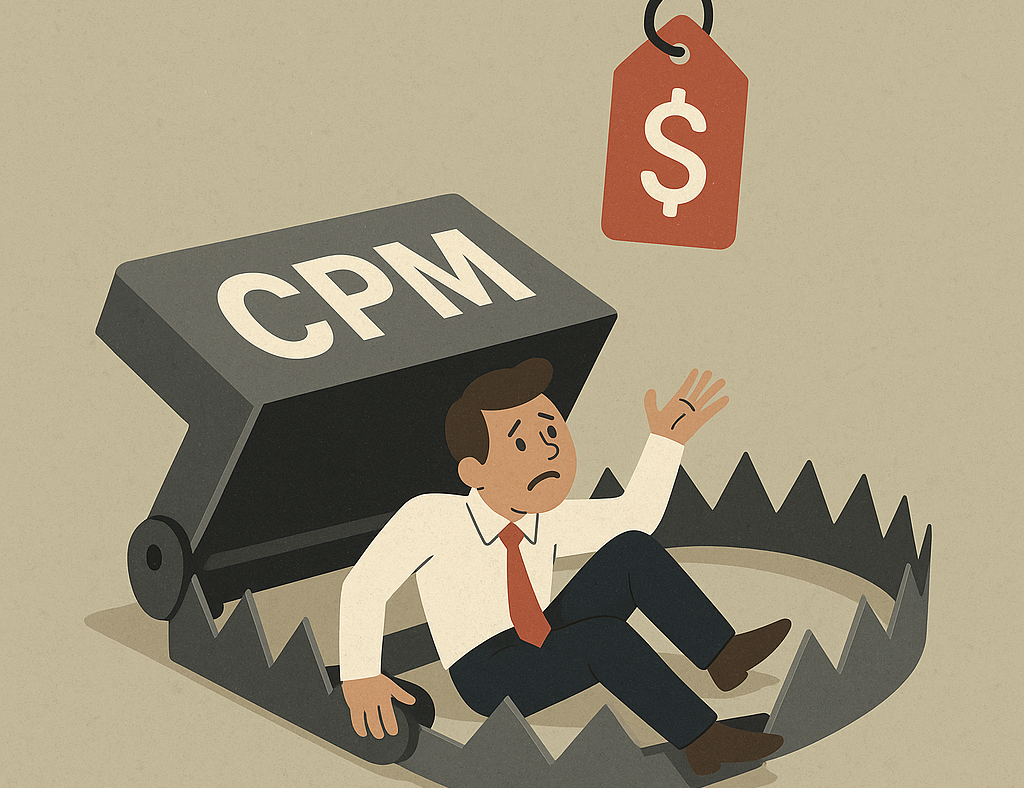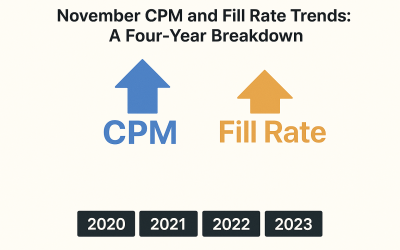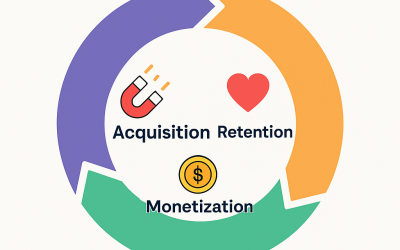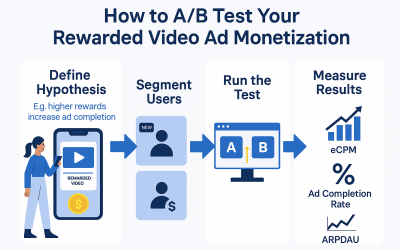The CPM Trap: Why Chasing High Rates Can Hurt Your Game
In the competitive world of mobile gaming, developers are constantly searching for ways to maximize revenue from their creations. Cost Per Mille (CPM) rates have become a holy grail metric—a seemingly straightforward number that promises to unlock higher earnings. But here’s the uncomfortable truth: obsessing over CPM rates without considering the bigger picture can actually damage your game’s long-term success and profitability.
Contents
- 1 Understanding CPM in Game Monetization
- 2 The Seductive Appeal of High CPM Rates
- 3 The Hidden Costs of CPM Obsession
- 4 The Reality of Sustainable Game Monetization
- 5 Video Ad CPM: The Special Case
- 6 Alternative Monetization Models and Hybrid Approaches
- 7 Best Practices for Balanced Monetization
- 8 AppLixir: The Long Game Wins
Understanding CPM in Game Monetization
Before diving into why high CPM rates can be misleading, let’s establish what we’re talking about. CPM, or Cost Per Mille, represents the amount advertisers pay for every 1,000 ad impressions. In mobile games, this typically applies to video ads, banner ads, and interstitial advertisements that players encounter during gameplay.
eCPM (effective Cost Per Mille) takes this concept further by calculating the actual revenue earned per 1,000 impressions, accounting for factors like fill rates and user interaction. For video ads specifically, average CPM rates can vary dramatically—from $1-3 for casual games to $10-15+ for premium gaming audiences in high-value markets.
The appeal is obvious: higher CPM means more money per ad shown. Simple math suggests that doubling your CPM should double your revenue. But this linear thinking ignores the complex ecosystem of player behavior, retention, and long-term value creation.
The Seductive Appeal of High CPM Rates
Game developers often fall into the CPM trap because the metric feels concrete and actionable. Unlike nebulous concepts like “player satisfaction” or “long-term retention,” CPM provides a clear, quantifiable number that can be tracked, compared, and optimized.
Many ad networks and monetization partners actively encourage this focus, promoting their “premium CPM rates” and positioning higher rates as the ultimate goal. Industry forums buzz with developers sharing CPM achievements, creating a culture where these rates become status symbols rather than business metrics.
The problem intensifies when developers start making decisions solely based on CPM optimization. They might choose ad networks purely on rate promises, increase ad frequency to boost impressions, or prioritize high-paying geographic regions while neglecting user experience factors that actually drive sustainable revenue.
The Hidden Costs of CPM Obsession
-
User Experience Degradation
Chasing high CPM rates often leads to more aggressive ad implementation. Developers might increase the frequency of interstitial ads, extend video ad lengths, or choose more intrusive ad formats that command premium rates. While these changes might boost short-term CPM, they create friction that damages the core gaming experience.
Players notice when ads feel excessive or poorly timed. A 30-second video ad that interrupts gameplay at a crucial moment might earn a high CPM, but it also increases the likelihood of app deletion. The most expensive ad impression is one that drives a valuable player away permanently.
-
Retention Rate Decline
High-CPM strategies frequently correlate with decreased player retention. When developers prioritize monetization over gameplay flow, they create negative associations between ads and fun. Players begin to see ads as punishments rather than optional opportunities for rewards.
Research consistently shows that player retention has a compound effect on lifetime value that dwarfs short-term CPM gains. A player who stays engaged for six months generates exponentially more value than one who leaves after aggressive early monetization, regardless of the CPM rates achieved during their brief play period.
-
Brand Safety and Ad Quality Issues
Premium CPM rates sometimes come from ad networks that prioritize revenue over brand safety or ad quality. Developers might find their games displaying low-quality, irrelevant, or even inappropriate advertisements that damage their brand reputation.
Poor ad experiences create negative sentiment that extends beyond the immediate frustration. Players associate bad ads with the game itself, leading to negative reviews, reduced word-of-mouth marketing, and decreased organic user acquisition—costs that never appear in CPM calculations.
The Reality of Sustainable Game Monetization
Successful long-term game monetization requires understanding that CPM is just one variable in a complex equation. The most profitable games focus on player lifetime value (LTV) rather than individual ad performance metrics.
Consider this scenario: Game A achieves $8 CPM with aggressive ad placement, while Game B maintains $5 CPM with thoughtful, player-friendly integration. Initially, Game A appears more successful. However, if Game A’s retention rate drops by 30% due to ad fatigue while Game B maintains steady engagement, Game B will generate significantly more total revenue over time.
-
The LTV Perspective
Lifetime value calculations reveal why CPM optimization can be counterproductive. A player who generates $20 in total revenue over six months of engagement is more valuable than one who generates $5 in the first week before churning, even if the early monetization came from premium CPM rates.
Smart developers track metrics like ARPDAU (Average Revenue Per Daily Active User) and monthly cohort LTV alongside CPM. These metrics provide a more complete picture of monetization health and help identify when CPM improvements come at the expense of sustainable revenue.
Video Ad CPM: The Special Case
Video ads deserve particular attention in this discussion because they often command the highest CPM rates in mobile gaming. Average CPM for video ads can range from $2-20+ depending on audience quality, geographic location, and advertiser demand.
The high rates make video ads attractive, but they also represent the greatest risk for the CPM trap. Developers might extend video lengths, increase frequency, or remove skip options to maximize revenue per impression. These tactics often backfire by creating negative user experiences that reduce overall engagement.
The most successful video ad implementations treat the ads as part of the game experience rather than interruptions. Rewarded video ads, for example, can achieve high eCPM rates while actually improving user satisfaction by providing valuable in-game benefits.
Alternative Monetization Models and Hybrid Approaches
Moving beyond CPM obsession opens up more sophisticated monetization strategies that balance revenue with player satisfaction.
-
Hybrid Monetization
The most successful games often combine multiple revenue streams: in-app purchases, subscription models, rewarded ads, and traditional display advertising. This diversification reduces dependence on any single metric like CPM while creating multiple touchpoints for revenue generation.
-
Value-Based Ad Integration
Instead of maximizing ad frequency, focus on maximizing ad value for players. Rewarded video ads that offer meaningful game benefits can command premium rates while improving rather than harming user experience. Players actively seek out these ads, creating positive associations with the monetization system.
-
Geographic and Demographic Optimization
Rather than chasing high CPM rates universally, optimize different approaches for different player segments. High-value markets might support premium ad experiences, while emerging markets might benefit from lighter, more accessible monetization approaches.
Best Practices for Balanced Monetization
-
Player-Centric Design
Start every monetization decision with player impact assessment. Ask not just “Will this increase CPM?” but “Will this improve or maintain the player experience while generating sustainable revenue?”
-
Comprehensive Metrics Tracking
Monitor retention rates, session length, and player satisfaction scores alongside CPM. Set up alerts when monetization changes negatively impact these core health metrics.
-
A/B Testing with Holistic Analysis
Test monetization changes against control groups, but measure success over weeks or months rather than days. Include retention, LTV, and user satisfaction metrics in your success criteria, not just immediate revenue impact.
-
Gradual Implementation
Implement monetization changes incrementally. Sudden increases in ad frequency or changes in ad placement can shock players and create negative reactions that are difficult to reverse.
AppLixir: The Long Game Wins
The CPM trap represents a fundamental misunderstanding of game monetization success. While CPM rates matter, they’re just one component of a sustainable revenue strategy. Games that prioritize player experience while thoughtfully implementing monetization tend to achieve higher long-term profitability than those that chase premium rates at the expense of user satisfaction.
The most successful game developers understand that their players are their most valuable asset. Protecting and nurturing player relationships through respectful monetization practices creates sustainable businesses that outlast short-term CPM optimization strategies.
Remember: the goal isn’t to maximize revenue from each individual ad impression—it’s to build a thriving game ecosystem where players willingly engage with monetization systems because they add value to their gaming experience. When you achieve that balance, strong CPM rates will follow naturally as part of a healthy, sustainable business model.
Focus on the long game. Your players—and your revenue—will thank you for it.




